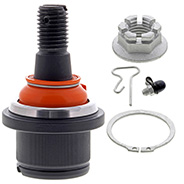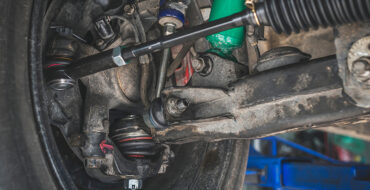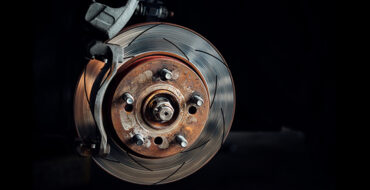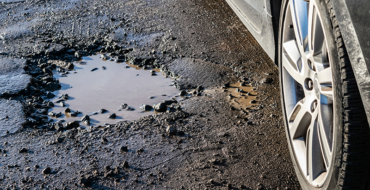Is that click or whir something serious or something that can wait? Learn how to check your wheel bearings and ball joints and find out in a hurry.
When your car’s suspension starts creaking and squeaking or feeling loose, your wheel bearings or ball joints are likely to blame. How do you know if they’re the problem or not? Don’t worry, here’s how to check your wheel bearings and ball joints.
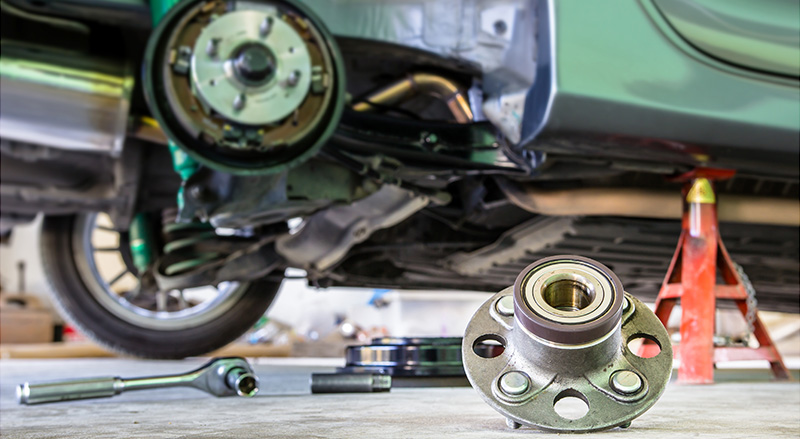
What is a Wheel Bearing?
First, what’s a bearing? It’s the part that connects your spinning wheel to the stationary suspension. It has three main parts: the inner and outer bearing races (the channels that holds the rollers) and the bearing rollers.
The ball or roller bearings are held inside the races. The bearings allow the inner race to turn without moving the outer race. Both races hold the bearings in place so the wheel doesn’t move in or out or up or down unless the outer race is also moving.
Over time, both the bearing races and the bearing rollers can wear out.
What is a ball joint?
Simply put, a ball joint is a ball in a socket with some grease—kind of like a hip joint. The fixed socket attaches to the control arm or other suspension link. The ball end usually attaches to something that moves, like your car’s hub assembly.
The ball joint lets your suspension move up and down while keeping the tire tread flat against the road. It also lets your wheels pivot in and out when you steer your car.
How to Check a Wheel Bearing
The first obvious sign of a bad wheel bearing is a helicopter-like roaring sound at highway speeds. It will start out low-pitched at lower speeds and get higher as you go faster.
To check the bearing, you need to jack up the wheel you suspect might be the culprit. Keep in mind that most car noises can be tough to pin down because sound echoes around the vehicle. So, if you’re worried about one bearing, it’s a good idea to check all four.
Once your car is lifted, grab the wheel at 3 and 9 to see if it’s loose. Do the same with your hands at 12 and 6. If the wheel (not the tire, tires are flexible) moves but the knuckle it attaches to doesn’t, then it’s time for a new bearing.
Some wheel bearings can be repaired with new rollers and new grease. Others are sealed and need to be replaced entirely. See your NAPA Auto Parts specialist for the right part or NAPA AUTOPRO service centre to have your vehicle repaired by our experts.
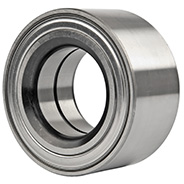
Wheel Bearing
Starting at 21.49 $
Buy Now
How to Check a Ball Joint
One of the first symptoms of ball joint wear is usually a clicking sound when you steer or hit a bump. You may also feel like your steering is loose. Both issues are caused by excess movement in the joint.
Checking a ball joint is a lot like checking your bearings. Start by jacking up your car and properly supporting it.
Grab the wheel at 3 and 9 and try to wobble it in and out. Watch the ball joints (there may be several depending on your car) one at a time to see whether the ball is rattling in the socket. Also look for any ripped or torn rubber boots, as a torn boot is a sign that water is getting in and you need a replacement joint.
You may also be able to hear or feel the rattling. A screwdriver tip on the joint can act as a mechanic’s stethoscope. You might need a second set of hands for this.
In a properly functioning ball joint, the ball should sit snugly in the socket. More than about one mm of space between the ball and socket means the joint is worn and it’s time to replace it. The same goes for your wheel bearings.
When in doubt, bring your car to a NAPA AUTOPRO service centre for diagnosis and repair.



